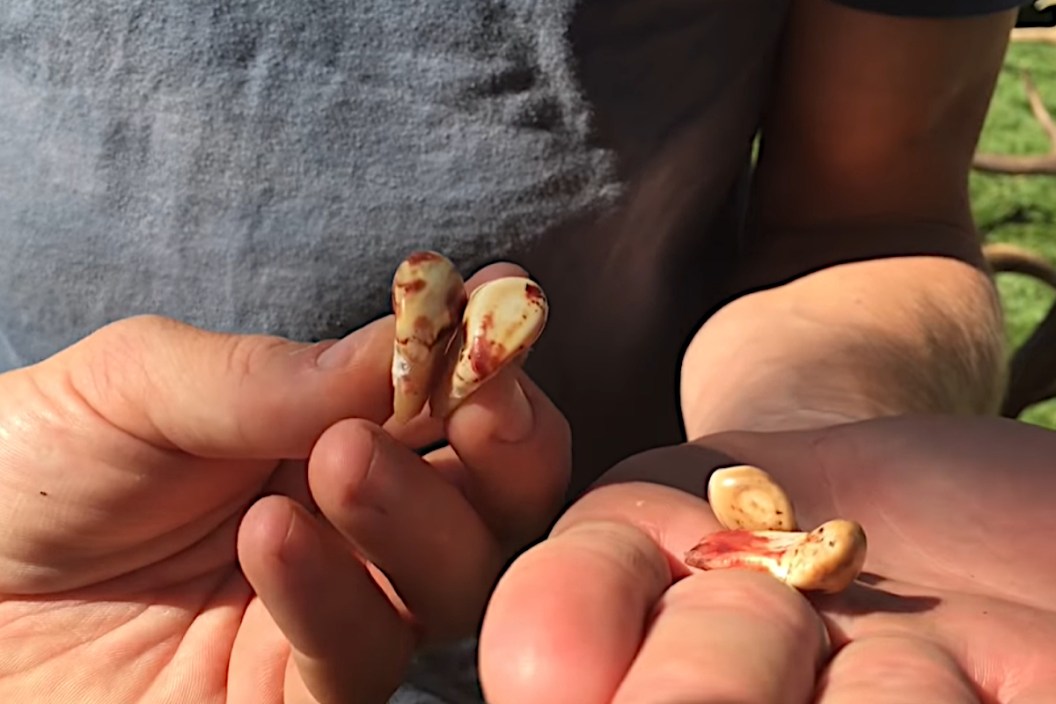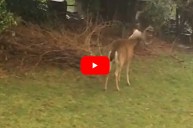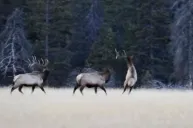When we think of ivory, we think of an elephant's tusks, or the teeth of a walrus, a whale or a hippo. But few people realize elk in North America are actually carrying around a remnant from their prehistoric ancestors, which you can find in their teeth. However, these "ivories" can be easy to miss if you don't know where to look. Today, we'll discuss what exactly they are, and why they're worthwhile to hold onto.
Hundreds of thousands of years ago, the ancestors of what we now call elk are believed to have had full-fledged tusks, similar to the Asian Muntjac deer, which still has upper canine tusks. Although it's likely the ancestors of elk used their tusks to fight in the same way Muntjac deer do today, evolution produced the antlers we admire today, making the tusks virtually useless. Even though they've completely disappeared, there is still a pair of ivories hidden in the upper jaw.
Depending on where you are, you may hear people refer to them as "eye teeth," "whistlers," or "buglers," but each is referring to the same thing. And, just like any other tooth, they'll slowly wear down and stain over time as the elk continues to age.
How much are elk ivories worth?
This question has been asked for thousands of years, as Native Americans once used elk ivories as a form of currency. Today, they still carry a certain value, particularly among jewelers and craft enthusiasts, but it's difficult to put a dollar amount on them. Considering a pair of elk ivory earrings could go for $30-$40 on eBay right now, it's safe to say they aren't a commodity. However, even as common as elk are in North America, few people even know these ivories exist, so there is still a rarity element that creates a certain level of demand.
Some states regulate which parts of an animal you can and can't sell, though, so make sure to check your local game regulations before you start wheeling and dealing. Considering the lack of monetary value, many hunters try to turn the ivories from a harvested elk into a memento by which they can remember their hunt.
How to remove elk ivories
Here is the tricky part. Many hunters down their elk in extremely remote areas of the North American wilderness. After all, the best elk hunting is often in the hardest-to-reach spots. Your first and only thought may be packing your animal out, which does unfortunately make it easy to forget about those two special, hidden teeth. And, most hunters will tell you that getting them out certainly isn't easy, as it will take a lot of labor and patience with a knife to dig them out. You have to be careful not to damage them, too, meaning you should avoid using a pair of pliers to pull them.
Hushin, one of the more popular hunting YouTube channels, demonstrated a fairly easy and efficient way to extract them in the video above. You'll see Eric Chesser uses a block and a hammer to get the job done despite the head being fairly dried out, which should have made it even more difficult.
Eric says an old hunter taught him the trick. It seems like there is almost always a better way to do things found by an old timer, isn't there? He simply uses a hammer and block of wood to quickly pop the ivories out of the jaw. We'd recommend using this technique if you have a block and hammer handy. It might be a good idea to throw these items in the back of your truck before your first elk hunt of the year.
Why you should keep your elk ivories
Even if it appears that elk ivories don't have a lot of monetary value right now, that doesn't mean it will always be true. If you're the kind of lucky hunter who gets to bag an elk every year, put those elk teeth away and save them for a rainy day. Who knows what they'll be worth in the future?
If you're good with crafts, this is a good chance to make a gift for someone special that comes from the heart. Maybe your significant other "tolerates" your hunting obsession. A handmade elk ivory pendant or piece of jewelry would be a good way to say thank you.
You could also use them to form lasting memories. Did your child just shoot his or her first elk? Make them a pendant to wear around their neck. You could even make matching ones, one for you and one for them. They're sure to hold a lot of sentimental value as your child grows older.
But perhaps the best reason to hang onto elk ivory is to simply utilize as much of the animal as you can. As hunters, we owe it to the animal to let very little go to waste. Even if you can't see a use for the ivory right now, hang onto them. You just may find the perfect use in the future.
For more outdoor content from Travis Smola, be sure to follow him on Twitter and check out his Geocaching and Outdoors with Travis YouTube channels.
READ MORE: EVERYTHING THERE IS TO FIGURE OUT ABOUT COLORADO ELK HUNTING




